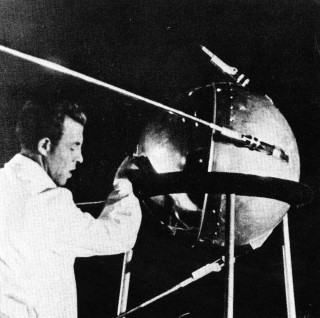Sputnik Satellite: The Sputnik 1 satellite, shown here on a rigging truck in the assembly shop, was successfully launched and entered Earth's orbit on October 4, 1957. Sputnik shocked the world, giving the Soviet Union the distinction of sending the first human-made object into space and placing the United States a step behind in the space race.
Credit: NASA
I was in grade school during the Cold War. One of the things that we were taught in school was how to hide under the desk in case of a nuclear attack. When the Soviet Union launched Sputnik in 1957, Americans were terrified. The Soviets accomplished something that the United States could not. Going into space was a matter of national security and national pride. Suddenly it was cool to be a science kid because we were going to save the country from the Soviet Union and, practically overnight, science fairs appeared and we were all encouraged to participate.
By the time I was in high school, I was really excited about science. I had a telescope--not a very good one--but I had one. I saved my nickels to buy materials so I could build a shortwave radio and listen to broadcasters from around the world. I was trying to advance my math skills because there were things about radios that required you to be able to figure out formulas.
My parents found places to send me to summer programs in high school. I attended one in math and another one in physics, all sponsored by the National Science Foundation. In one of these summer courses we studied relativity and quantum mechanics. It was so exciting! I thought science was the coolest thing you could do.


